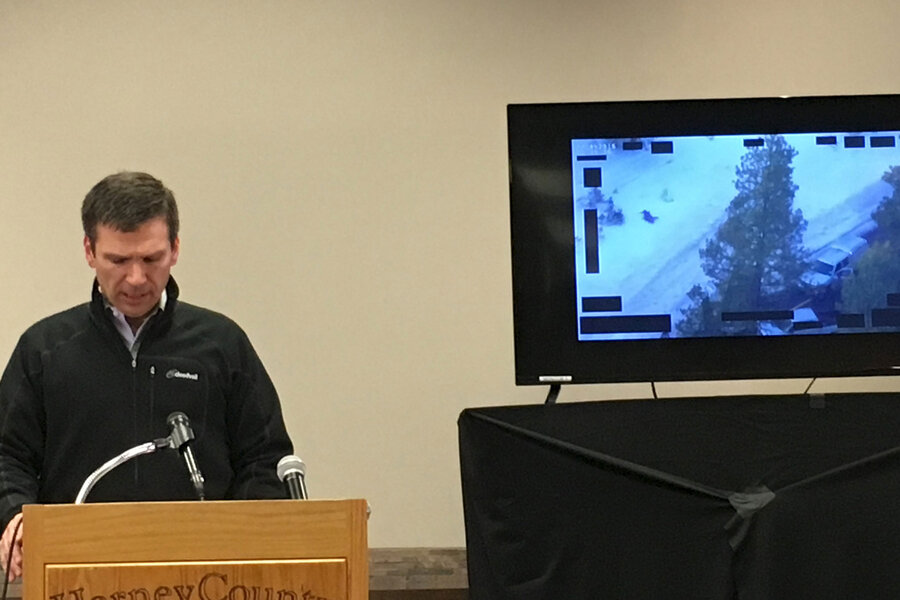Why did FBI release video of the Oregon occupier shooting so quickly?
Loading...
The FBI released video footage within just three days of a fatal police shooting, in hopes transparency will preempt it from becoming a touchstone for controversy.
On Tuesday, the Oregon State Police (OSP) and FBI shot the spokesman for an armed group that has occupied the federal Malheur National Wildlife Refuge in Burns, Ore., since Jan. 2 in protest of the arrest of local ranchers and federal land control, The Associated Press reported. The shooting of Arizona rancher Robert “LaVoy” Finicum occurred during a traffic stop in which the group's leader, Ammon Bundy, and four other group members were also arrested.
Law enforcement feared Mr. Finicum would become a martyr for the group's cause, which had the sympathy of many in the American West, even though most disapproved of their tactics.The video released Thursday showed the rancher was reaching toward his pocket when police shot him, the AP reported. Upon investigation, the FBI discovered a loaded 9mm semi-automatic handgun in Finicum's pocket.
"On at least two occasions, Finicum appears to reach his right hand toward a pocket on the left inside portion of his jacket,” FBI special agent Greg Bretzing told the AP. "The FBI and OSP tried to effect these arrests peacefully."
Law enforcement produced the video evidence promptly and without specific prodding or legal threats, perhaps a sign that law enforcement agencies are changing the way they handle video evidence of shootings.
In Chicago, Mayor Rahm Emanuel tried for over a year to avoid releasing video of the killing of 17-year-old Laquan McDonald by Officer Jason Van Dyke in October 2014. The city of Chicago released video footage, which showed police shooting the knife-wielding teenager 16 times, only after a court order in November 2015, Bill Ruthhart reported for the Chicago Tribune.
The mayor of Minneapolis called for a federal probe into a police shooting of Jamar Clark just 2 days after the Nov. 15 incident. Protesters associated with the Black Lives Matter movement demanded the release of videos, but investigators said no police video exists, and other videos would not be released for fear of harming witness testimony, Pat Pheifer reported for the Minneapolis Star Tribune.
The conventional logic requires police to avoid publicly releasing any evidence – including video – for fear of interfering with an upcoming court case, so demands by protesters to release video of police shootings were met with resistance. This is beginning to change, Patrik Jonsson reported for The Christian Science Monitor.
“There’s a long history of prosecutors [in Chicago and elsewhere] not supporting the release of any evidence because it would taint the jury pool and would eventually change witness statements,” Jack McDevitt, director of the Institute on Race and Justice at Northeastern University in Boston, told The Christian Science Monitor.
“But I think police departments have led the way in now saying, ‘I’m going to release it, because it’s more important for the community relations part of our mission to get the truth out there than it is to worry about a prosecution that isn’t going to take place for six or 12 months,’ ” Mr. McDevitt added.
In June, Boston police shared video of a fatal shooting with community leaders just one day after it occurred. It was an unusual step, but the video footage cleared police officers of undue blame in the death of Usaama Rahim, who was threatening officers, The Christian Science Monitor reported.
Later in the summer, the family of an unarmed black man killed by police in Cincinnati received video footage less than a week after his death. Based on the video evidence, Officer Ray Tensing was charged with first-degree murder for the traffic stop shooting of Samuel DuBose, The Monitor reported.








